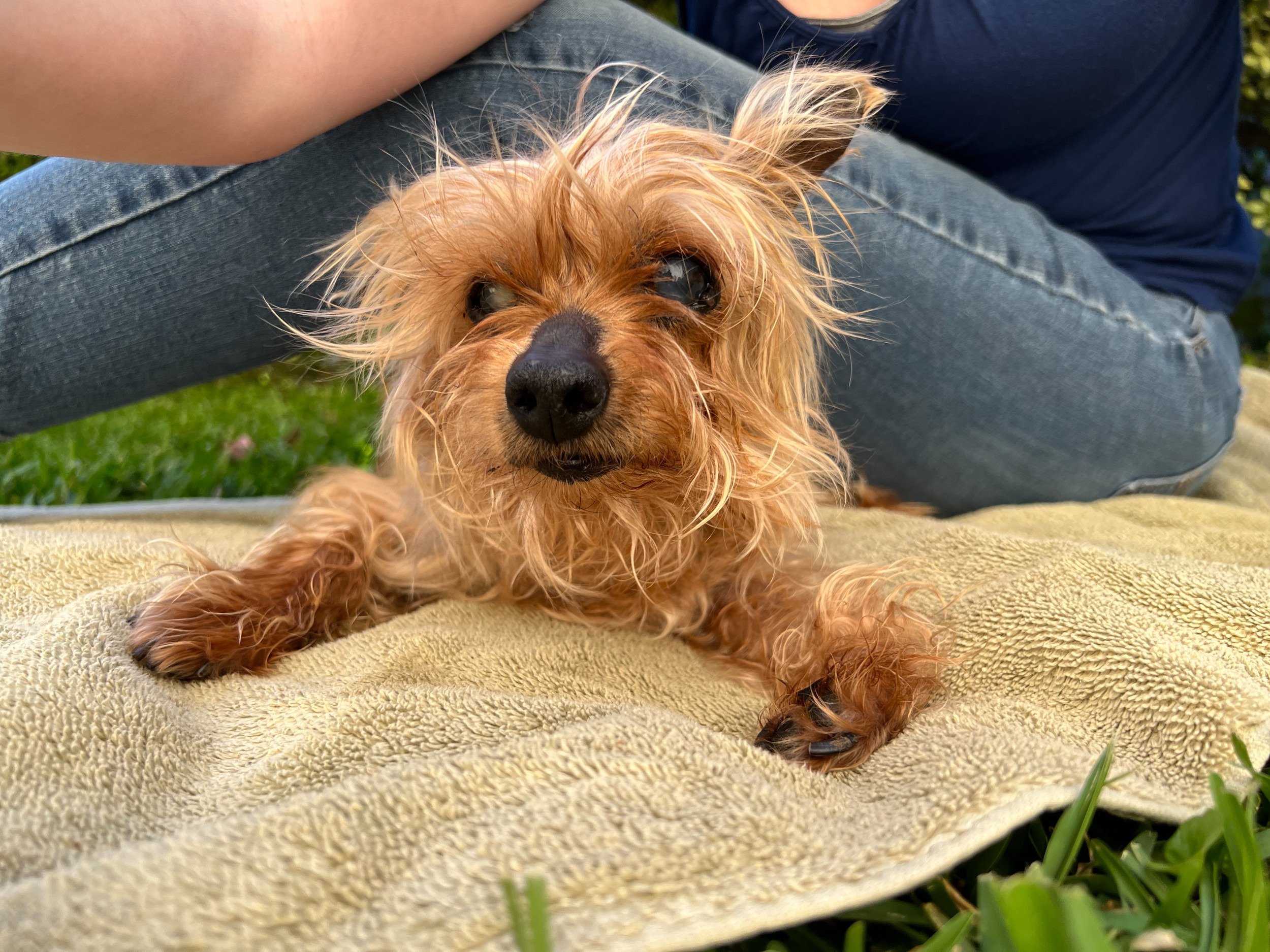A Yorkshire terrier’s dramatic fur change over the course of a few years has in equal parts stunned and amused viewers online, after catching even her owner off guard.The canine’s owner took to TikTok under @patriciaivyvo on June 17, to highlight the stark contrast in her adorable terrier’s looks. The footage showed the dog first as a puppy nestled in her owner’s arms with a distinctive dark brown-and-black coat. The video then cut to the present day, revealing the same Yorkshire terrier lounging in bed, now nearly unrecognizable with a light, blond coat.The post has been viewed more than 647,000 times and liked by almost 100,000 users to date, prompting comments from pet owners who have had similar experiences.Dr. Liza Cahn, an Embrace Pet Insurance contributor, told Newsweek that dog coats can sometimes change, even as drastically as the transformation shown in the video.”A dog’s coat color is caused by a complex interplay of genetics, though it can also be affected by factors such as aging, diet, overall health, and environmental exposure,” Cahn said. “While most dogs maintain their adult color throughout life, there are a few interesting examples of how genetics can contribute to color change.”Color fading, also known as progressive graying, and this dominant gene causes puppies born with dark coats to gradually lighten in color over their first few years of life, going from black or brown to silver, caf茅-au-lait, or beige,” Cahn added.She said that this progressive lightening affects the hair itself, with the dog’s skin, nose, and eye rims typically remaining dark.”Another distinct genetic example associated with faded coat color is known as color dilution,” Cahn said. “Unlike progressive graying, dilution affects the coat color from birth, essentially watering down the pigment to appear gray or fawn.”Color dilution impacts all pigment, so these dogs will also have lighter coloring on their nose, paw pads, and eyes,” Cahn added.An overlaid text on the video read: “Nobody prepares you for the color change,” while a caption below added: “I had no idea that Yorkies could change colors like that once they’ve grown out their puppy hair, and to think I almost named her boba.”For many viewers, the transformation was not just a novelty鈥攊t was relatable.In the comments section, TikTok users flooded the post with their own stories of pet glow-ups, expressing surprise, affection, some tips, and even mild regret at not knowing what to expect.”You still have two more color changes to go prepare,” one viewer said.”And they change color once you give them a cut,” another added. “So don’t cut them too early.””Mine was the beige-blue color, and she got blonder and blonder over years, it’s the cutest thing ever,” a third viewer shared.”Nobody warned me either my baby was chocolate brown now he’s the color of your baby,” one comment read.As Cahn said, the change in a Yorkshire Terrier’s coat color is not unusual. The American Kennel Club said that Yorkie puppies are typically born with black-and-tan coats. As they mature鈥攗sually between 9 weeks and 1 year鈥攖he black fur often fades to show lighter hairs.This transformation is influenced by the dog’s genetics, which is also what is responsible for many Yorkshire terriers turning silver as they grow older.Newsweek reached out to @patriciaivyvo for more information via TikTok.Do you have funny and adorable videos or pictures of your pet you want to share? Send them to life@newsweek.com with some details about your best friend, and they could appear in our Pet of the Week lineup.
